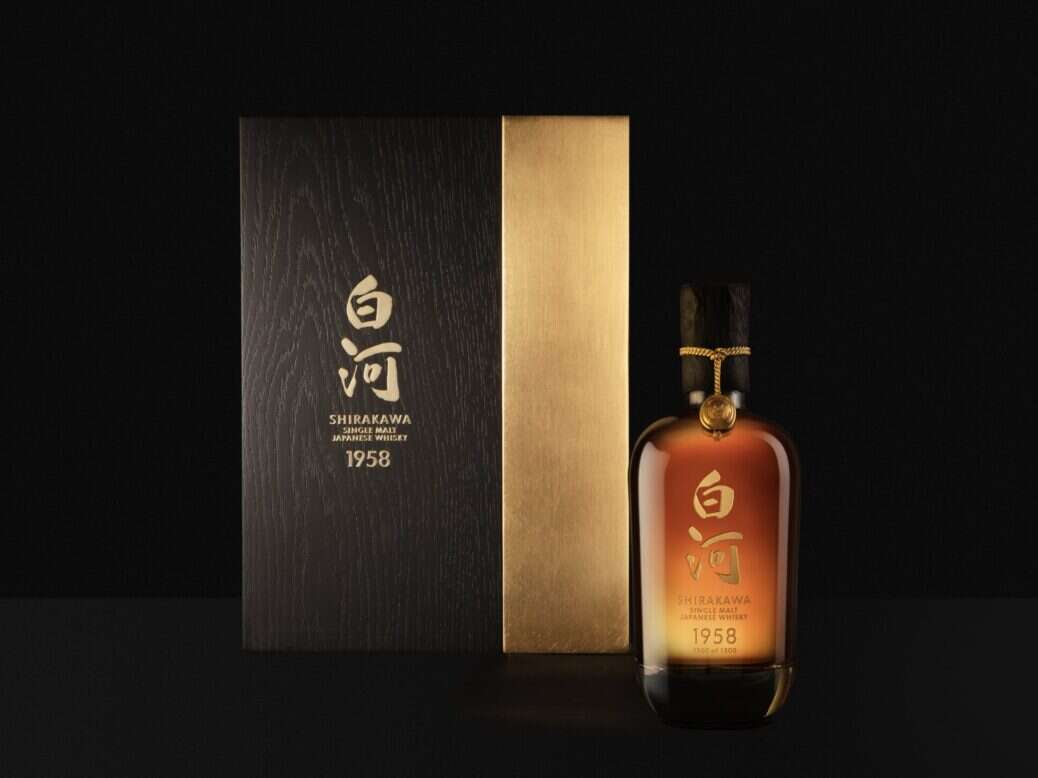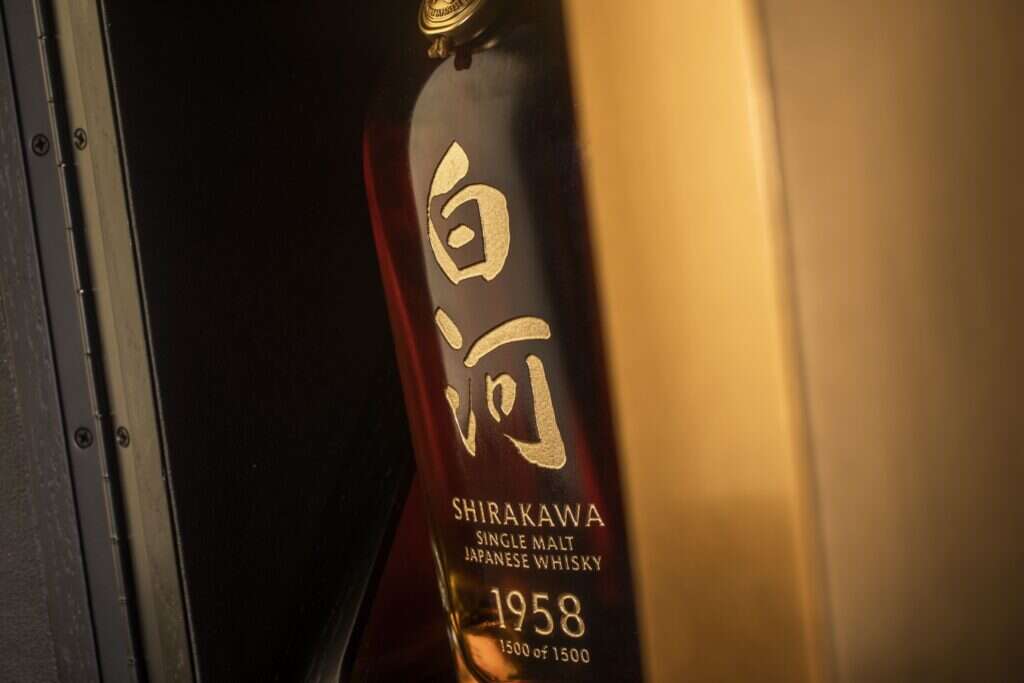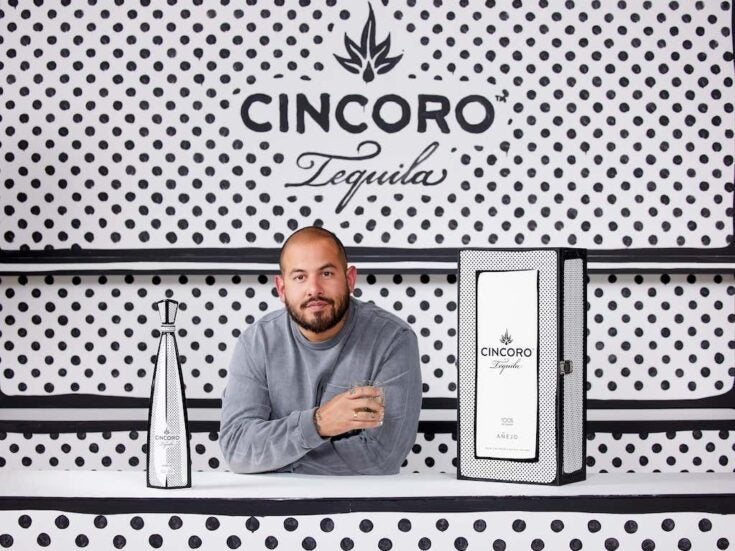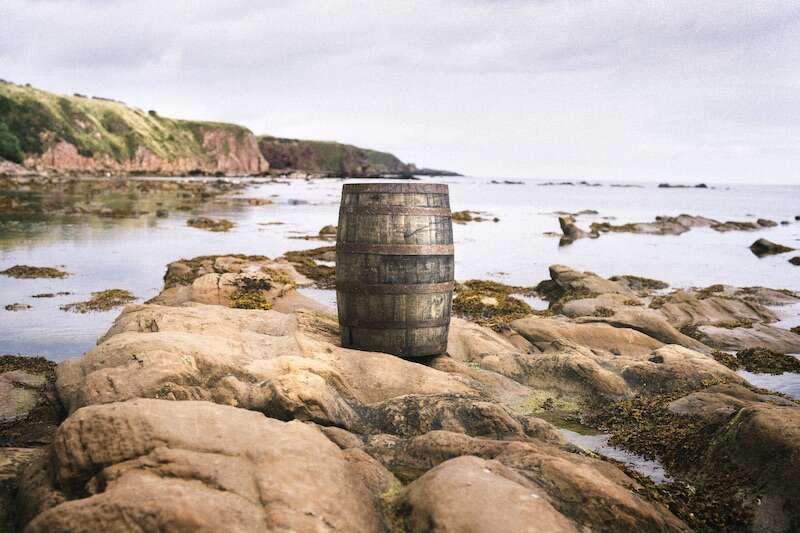
Don’t worry if you have never heard of Shirakawa. Even the most dedicated whisky enthusiasts struggle to find information on the long-closed Japanese distillery. As such, you might find the idea of paying £25,000 ($29,000) for a bottle of its whisky rather fanciful. However, behind the Shirakawa 1958 – its first and only single malt release – lies a tale of such provenance and romance that the price quickly begins to make sense.
Drinks company Takara Shuzo acquired Shirakawa in 1947 and used it throughout the 1950s and 1960s to produce whisky for its King blend. The company was one of the pioneers of Japanese whisky and demand was a fraction of what it was today. In fact, single malt whisky as a concept barely existed at all. When interest failed to grow, the company reformatted the distillery to produce shochu before closing and demolishing it in 2003.
Stephen Bremner, managing director of Tomatin, grew fascinated with Shirakawa’s short foray into whisky production. The Japanese company owns Tomatin, so gave Bremner a license to explore Shirakawa’s patchy archives. His research and discussions with former employees eventually led to the discovery of a small number of stainless steel containers in Takara Shuzo’s factory in Kyushu. Inside those steel containers was the Shirakawa 1958, a complex whisky with an incomplete backstory.
[See also: Tasting Notes: Littlemill 45 Year Old, 250th Anniversary Edition]

The liquid had been on quite a journey in the 64 years since its distillation. The whisky was first matured in oak barrels and then transferred into ceramic jars at an unknown date. When the distillery closed, the company transferred it to steel vats where it sat idle for years. Due to poor record keeping, neither Tomatin or Takara Shuzo can say exactly how ‘old’ this whisky is. The time spent in the oak barrels dictates the whisky’s age. Without knowing the exact move date, they couldn’t put an age on the bottle.
You cannot, however, understate the significance of the year that does feature on the front of the bottle – 1958 makes this expression the earliest example of Japanese single malt ever released. That fact instantly makes this whisky seriously collectible and goes a long way to justifying the price.
“There are no known examples of Japanese whisky claiming to be from a single vintage that predate Shirakawa 1958,” said Stefan van Eycken, one of the world’s leading Japanese whisky and distilling historians. “Even though Shirakawa distillery was one of the pioneers of malt whisky making in Japan, the liquid was never officially available as a single malt.”
Its scarcity adds to the appeal. Barring the discovery of another unknown parcel, this will be Shirakawa’s first and last single malt release. There are just 1,500 bottles, far less than the number of whisky collectors with deep pockets. Bottles are currently available in specialist retailers in the UK and directly through Tomatin’s private client channels and are unlikely to hang around for long.
Shirakawa 1958 tasting notes
Finally, there is the taste. There is no denying that this is a collector’s whisky, but someone will open their bottle at some point. When that moment comes, they will discover a whisky on par with anything to come out of Japan. It bears all the hallmarks of several decades of maturation as well as the trademark of mizunara oak. No one knows the cask type it was aged in, but mizunara oak was dominant in the 1950s and 1960s. That fact, combined with the whisky’s vibrant and spicy profile, means confidence is high.
Sitting alongside oak influence is a plethora of flavors, from sweet oranges all the way to bonfire ash. It evolves beautifully in the glass with each sip offering something slightly different from the last. At a cask strength of 49%, the whisky also benefits from a drop or two of water, which dials back the spice and brings the fruit notes forward.
Nose: An initial hit of resin that screams maturity. The oak spice is heavily present at first, but time in the glass allows tropical fruit notes to take over. Hints of fresh orange zest and honey.
Palate: An instant zing of spice coats the mouth. The mouthfeel is both waxy and slightly drying. There is less of the fruit on the palace and more earthy notes, eventually evolving to an ashiness that reminds me of a smoldering morning-after bonfire. A drop of water (literally, a drop) dials down the spice and then brings the fruit forward. I preferred the cask strength.
Finish: A delightful mintiness to finish, which reminds me of the peated highland spirit of Brora. I only find this mint finish on whiskies aged for around 40 years as the oak spice has had enough time to wane just enough.
Rating: 9.5/10 – A very high score for a very good whisky. I’ll admit that I am swayed by the romantic journey this whisky endured before 50ml of it reached my living room, but it is nonetheless a wonderful liquid in its own right.
[See also: Glenfiddich Adds 50 Year Old to Time Re:Imagined Series]






